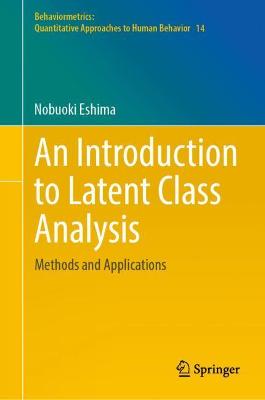Behaviormetrics: Quantitative Approaches to Human Behavior
2 primary works
Book 3
This book reconsiders statistical methods from the point of view of entropy, and introduces entropy-based approaches for data analysis. Further, it interprets basic statistical methods, such as the chi-square statistic, t-statistic, F-statistic and the maximum likelihood estimation in the context of entropy. In terms of categorical data analysis, the book discusses the entropy correlation coefficient (ECC) and the entropy coefficient of determination (ECD) for measuring association and/or predictive powers in association models, and generalized linear models (GLMs). Through association and GLM frameworks, it also describes ECC and ECD in correlation and regression analyses for continuous random variables. In multivariate statistical analysis, canonical correlation analysis, T2-statistic, and discriminant analysis are discussed in terms of entropy. Moreover, the book explores the efficiency of test procedures in statistical tests of hypotheses using entropy. Lastly, it presents an entropy-based path analysis for structural GLMs, which is applied in factor analysis and latent structure models. Entropy is an important concept for dealing with the uncertainty of systems of random variables and can be applied in statistical methodologies. This book motivates readers, especially young researchers, to address the challenge of new approaches to statistical data analysis and behavior-metric studies.
Book 14
This book provides methods and applications of latent class analysis, and the following topics are taken up in the focus of discussion: basic latent structure models in a framework of generalized linear models, exploratory latent class analysis, latent class analysis with ordered latent classes, a latent class model approach for analyzing learning structures, the latent Markov analysis for longitudinal data, and path analysis with latent class models. The maximum likelihood estimation procedures for latent class models are constructed via the expectation-maximization (EM) algorithm, and along with it, latent profile and latent trait models are also treated. Entropy-based discussions for latent class models are given as advanced approaches, for example, comparison of latent classes in a latent class cluster model, assessing latent class models, path analysis, and so on. In observing human behaviors and responses to various stimuli and test items, it is valid to assume they are dominated by certain factors. This book plays a significant role in introducing latent structure analysis to not only young researchers and students studying behavioral sciences, but also to those investigating other fields of scientific research.

